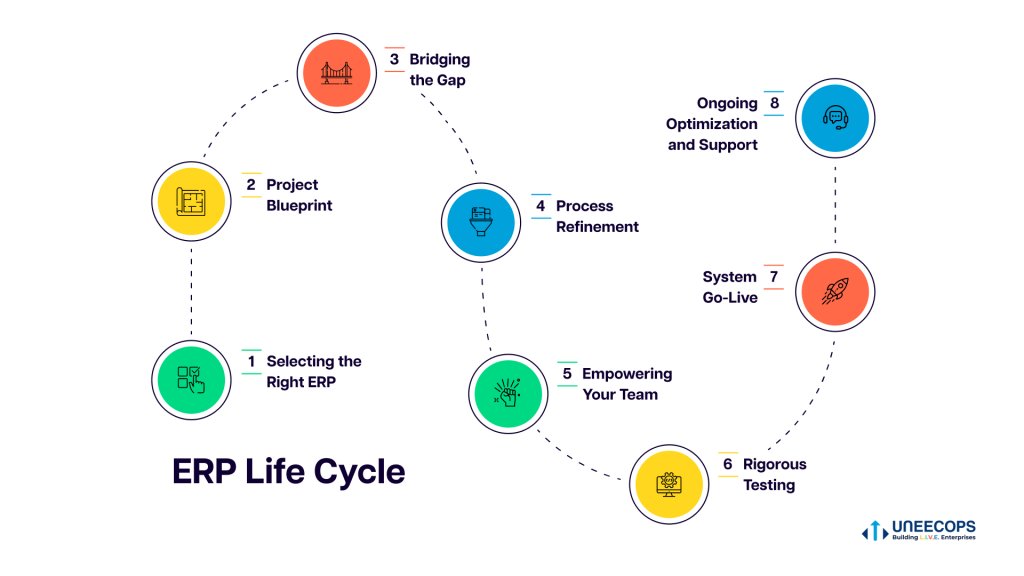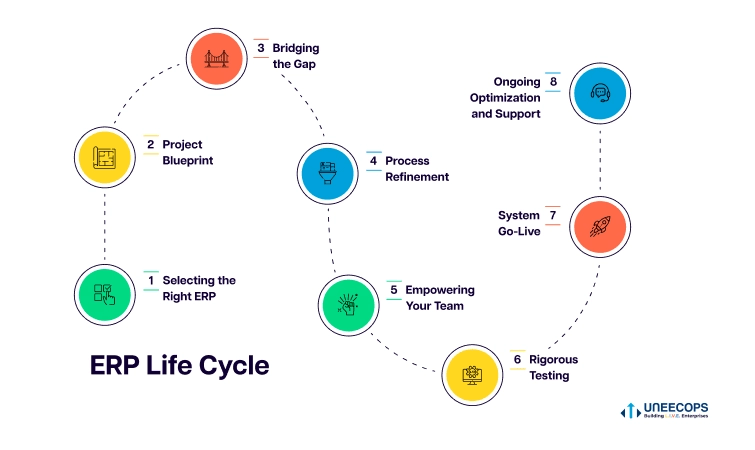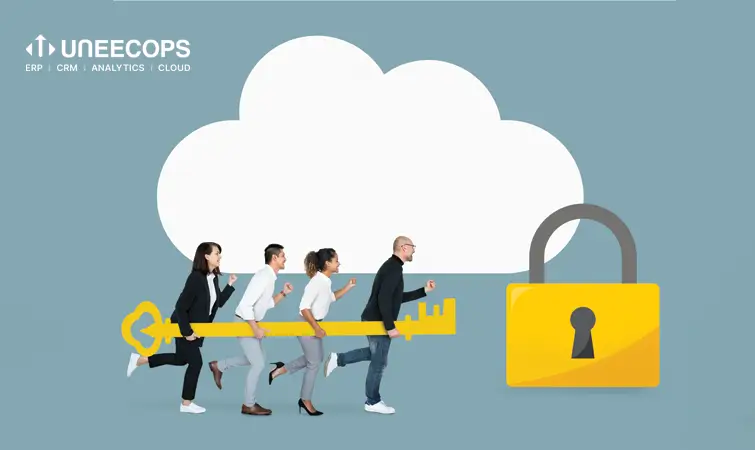Technology implementations are not always easy. We often see customers who consider SAP Business One as a very basic homegrown application, or spreadsheets that intend to change everything in a single scoop. They talk to ERP partners; they see what the product is capable of and they start aiming high.
Of course, it is great to think big when it comes to implementing or migrating from a legacy system. You need to have an eye on the big picture but it’s important to keep a check as you are not “overboiling the ocean” and overwhelming your users, who have been earlier familiar with their Excel spreadsheets and various other systems that keep their operations running. It’s important to set realistic expectations and go by a phased approach. The approach could make a real difference in your project’s success.
This blog shall serve as a great piece of information to reach closer to a successful ERP system implementation.
ERP Life Cycle or Phases of Successful ERP implementation:
Implementing an ERP system is a strategic undertaking that can significantly enhance a business’s efficiency and profitability. This complex process involves several ERP lice cycle stages:
Stage 1: Selecting the Right ERP
The foundation of a successful ERP system implementation is choosing the software that aligns with your business’s unique needs. With countless options available, it’s essential to carefully evaluate your organization’s specific requirements and select an ERP system that can effectively support your operations. SAP is the world’s #1 ERP, 99 of the 100 largest companies in the world are SAP customers.
Stage 2: Project Blueprint
A well-defined project plan is crucial for smooth implementation. This ERP system implementation stage involves outlining project goals, allocating resources, and establishing a clear timeline to guide the process.
Stage 3: Bridging the Gap
A gap analysis compares your current business processes with the capabilities of the new ERP system. This assessment helps identify areas for improvement and optimization.
Stage 4: Process Refinement
Based on the gap analysis findings, businesses often need to reengineer their processes to maximize the benefits of the ERP system. This stage in ERP lifecycle involves streamlining workflows and eliminating inefficiencies.
Stage 5: Empowering Your Team
To ensure successful adoption, employees require comprehensive training on the new ERP system. This stage in the ERP life cycle focuses on equipping your workforce with the skills to effectively utilize the software.
Stage 6: Rigorous Testing
Before the full-scale launch, thorough testing is essential to identify and address any issues. This stage involves simulating real-world scenarios to ensure the ERP system functions as expected.
Stage 7: System Go-Live
Once testing is complete, the ERP system implementation is complete. This ERP life cycle stage marks the transition from the old system to the new one.
Stage 8: Ongoing Optimization and Support
ERP implementation is an ongoing journey. Regular maintenance, updates, and employee training are necessary to maximize the system’s value and address evolving business needs.
By following these stages and carefully managing each step, businesses can successfully accomplish ERP system implementation that drives growth and improves overall performance. See below ERP implementation life cycle diagram for more details.

As you pass though stages in the above, ERP implementation life cycle diagram, it is important to remember a few things. Read on..
ERP implementation best practices:
Missing the budget aspect
Lot many organizations I know go by “Do This Now” approach which causes everyone to rush the implementations and sometimes it set unrealistic expectations about what’s actually needed from the implementation.
Not considering today’s key pain points
Give utmost importance to the current set of challenges that your organization is dealing with.
Categorize expectations strategically
High-priority and critical challenges will eventually come first before the “nice to haves”.
Filter out key technology creating a big impact in less time
A SaaS system such as SAP Cloud is quite effective, budget-friendly and scalable. It allows you to scale up easily and faster. Alongside this, there is no need to maintain and invest in server and maintenance costs.
Involving executives from the beginning
Receive clear communication from the stakeholders and users involved as what they expect from the system to be. What all feature they would like to keep in the system to speed up their tasks.
Keeping a check as what all data are you migrating
Ask yourself what you would need. Your first urge would be to move almost everything. But if you take a deep thinking and know what you need, you will be one step closer to benefit realization. What’s needed will save a lot of your time and give you much better value-addition.
Hire the right ERP partners
Implementing by phased approach generally goes a little longer in benefit realization of ERP. There’s no end to the level of customization you can make. The key is to just restrict yourself in doing them all at once. A good ERP partner will guide you all through the way. So, take your time and do some planning and set realistic expectations of your time, budget and effort.
So, these were a few of the pointers for successful ERP implementation. Make sure management is on board, have realistic time and resource expectations, keep up with milestones, set goals and stick to them.







